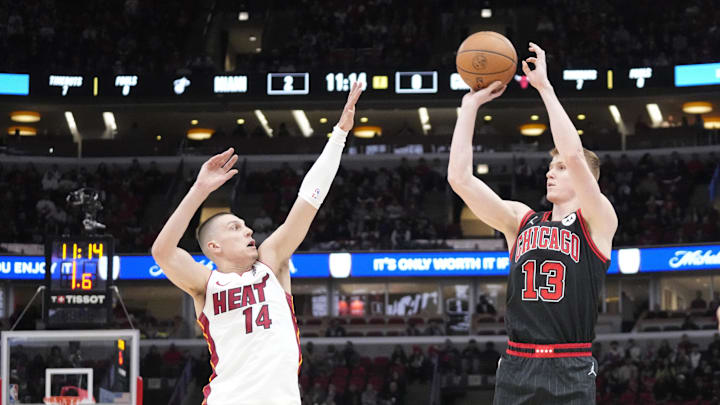The clock is ticking on a pivotal decision for the Bulls. Both Kevin Huerter and Zach Collins—making a combined $35-plus million on expiring contracts—sit atop every "trade-for-assets" list. Conventional wisdom dictates that they should be flipped for, in this case, most likely second-round picks; however, this is a moment where the Bulls must look beyond the obvious balance sheet and recognize the long-term cost of short-term asset gain.
The Bulls don't need another retooling. They need to turn these two potential trade chips into foundational pillars through smart, cost-controlled retention. Yes, Huerter and Collins are overpaid at their current numbers. But that is precisely why it is the moment for pragmatic renegotiation. The Bulls can turn two potentially lost pieces of assets into strong, cost-contained pillars of the rotation.
The Fix-It Contracts: Kevin Huerter: $12–14 million annually over three or four years. Zach Collins: $9–11 million annually over three or four years.
Here's the key: Committing to this $10–14 million average annual value range isn't just about retaining talent; it's about snagging established NBA production for a genuine bargain. This cost falls right in the bucket typically reserved for the Non-Taxpayer Mid-Level Exception (NTMLE). By locking these guys in at that price, the Bulls guarantee their bench depth and keep their financial powder dry, staying flexible for major moves down the road.
The Bulls must recognize the proven value of continuity
Roster continuity isn't a luxury—it's a proven championship ingredient. Fifteen of the last twenty-three Finals teams had at least 60 percent of their total minutes played by returning players. Continuity builds chemistry, and chemistry acts as a performance multiplier—the hidden stat behind every contender.
Huerter and Collins already understand where Coby White wants the ball, how Josh Giddey manipulates tempo, and where Matas Buzelis prefers to cut. That kind of instinctive cohesion disappears the second you make a deadline trade. Replace them mid-season, and you'll spend months watching new players learn Billy Donovan's system on the fly—a guaranteed chemistry tax that kills momentum.
The Case for Kevin Huerter
Huerter has quietly become the offensive connector this roster has long needed. As a primary floor-spacer and wing starter, he's thriving near the 40 percent mark from deep while giving the Bulls pace and rhythm in transition. Chicago's offensive efficiency jumps when he logs significant minutes, and his movement shooting keeps the floor wide for Giddey's drive-and-dish game. Most importantly, he takes pressure off Coby White by making opposing defenses pay attention to a second perimeter threat.
The Case for Zach Collins
Collins, meanwhile, gives the Bulls a modern backup big who can defend, stretch the floor, and pass. The team's defensive metrics significantly improve when he's on the floor. He's strong enough to pair with Vucevic and mobile enough to anchor second-unit lineups—his playmaking from the elbows and occasional three-point stroke round out a complete, team-first profile. He is the perfect 'small-ball' center insurance, able to execute complex defensive coverages that Vucevic or Smith cannot handle alone.
The critical thesis Chicago must remember
The message is simple: Trading these two functional veterans for marginal draft capital would be a retreat. Re-signing them on these terms is a strategic double-down that allows Chicago's core to flourish—and lets the 'performance multiplier' of chemistry build the lasting success this organization truly craves.
